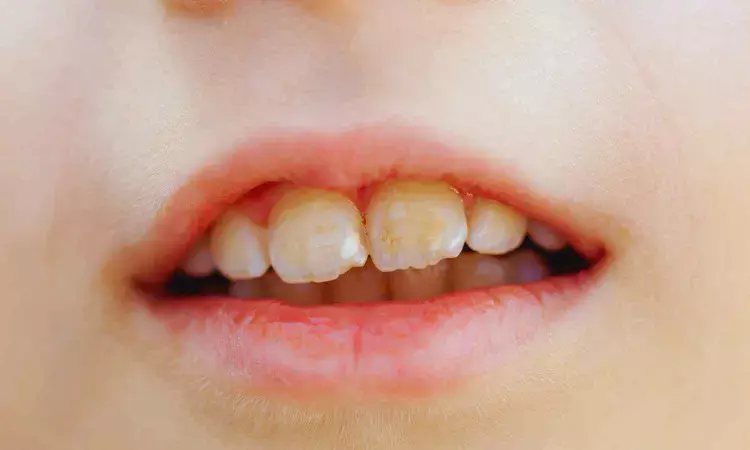- Home
- Medical news & Guidelines
- Anesthesiology
- Cardiology and CTVS
- Critical Care
- Dentistry
- Dermatology
- Diabetes and Endocrinology
- ENT
- Gastroenterology
- Medicine
- Nephrology
- Neurology
- Obstretics-Gynaecology
- Oncology
- Ophthalmology
- Orthopaedics
- Pediatrics-Neonatology
- Psychiatry
- Pulmonology
- Radiology
- Surgery
- Urology
- Laboratory Medicine
- Diet
- Nursing
- Paramedical
- Physiotherapy
- Health news
- Fact Check
- Bone Health Fact Check
- Brain Health Fact Check
- Cancer Related Fact Check
- Child Care Fact Check
- Dental and oral health fact check
- Diabetes and metabolic health fact check
- Diet and Nutrition Fact Check
- Eye and ENT Care Fact Check
- Fitness fact check
- Gut health fact check
- Heart health fact check
- Kidney health fact check
- Medical education fact check
- Men's health fact check
- Respiratory fact check
- Skin and hair care fact check
- Vaccine and Immunization fact check
- Women's health fact check
- AYUSH
- State News
- Andaman and Nicobar Islands
- Andhra Pradesh
- Arunachal Pradesh
- Assam
- Bihar
- Chandigarh
- Chattisgarh
- Dadra and Nagar Haveli
- Daman and Diu
- Delhi
- Goa
- Gujarat
- Haryana
- Himachal Pradesh
- Jammu & Kashmir
- Jharkhand
- Karnataka
- Kerala
- Ladakh
- Lakshadweep
- Madhya Pradesh
- Maharashtra
- Manipur
- Meghalaya
- Mizoram
- Nagaland
- Odisha
- Puducherry
- Punjab
- Rajasthan
- Sikkim
- Tamil Nadu
- Telangana
- Tripura
- Uttar Pradesh
- Uttrakhand
- West Bengal
- Medical Education
- Industry
White Spot Lesions may Show Higher hydrogen peroxide Permeability and Poorer Whitening Results: Study

Researchers have found in a new study that white spot lesions (WSLs) on enamel allow greater penetration of hydrogen peroxide and yield less favorable optical outcomes—especially after in-office bleaching—suggesting that at-home bleaching may be a safer, more esthetically favorable option for managing these lesions. In this in-vitro study published in Clinical Oral Investigations, forty premolars were divided into four groups: sound and artificially demineralized (WSLs), each subjected to in-office (35 % hydrogen peroxide) or at-home (16 % carbamide peroxide) bleaching. Analysts measured HP permeability into the pulp chamber and tracked color change using spectrophotometry.
The results confirmed that WSLs significantly increased HP diffusion with in-office bleaching (p < .05), indicating heightened sensitivity risk. Moreover, the optical outcomes were consistently poorer: WSL-teeth showed lower lightness (L*) and whitening index (WI_D) values compared to sound teeth across treatments. Notably, differences remained regardless of bleaching method, although at-home bleaching avoided excessive HP penetration and produced marginally better esthetic results.
These findings raise concern about the safety and effectiveness of aggressive bleaching in teeth with WSLs, which are already structurally compromised. The authors propose that gentler, home-based bleaching protocols combined with remineralization strategies may preserve enamel integrity while improving appearance safely. For clinicians, this means evaluating lesion type before choosing a bleaching method and advising conservative options when WSLs are present. Further clinical trials are needed to verify long-term outcomes and guide tailored bleaching protocols for patients with enamel hypomineralization.
Barbosa, L.M.M., Baracco, B., Carneiro, T.S. et al. Impact of bleaching on white spot lesions: hydrogen peroxide permeability and color alteration. Clin Oral Invest 29, 401 (2025). https://doi.org/10.1007/s00784-025-06490-3
Dr. Shravani Dali has completed her BDS from Pravara institute of medical sciences, loni. Following which she extensively worked in the healthcare sector for 2+ years. She has been actively involved in writing blogs in field of health and wellness. Currently she is pursuing her Masters of public health-health administration from Tata institute of social sciences. She can be contacted at editorial@medicaldialogues.in.
Dr Kamal Kant Kohli-MBBS, DTCD- a chest specialist with more than 30 years of practice and a flair for writing clinical articles, Dr Kamal Kant Kohli joined Medical Dialogues as a Chief Editor of Medical News. Besides writing articles, as an editor, he proofreads and verifies all the medical content published on Medical Dialogues including those coming from journals, studies,medical conferences,guidelines etc. Email: drkohli@medicaldialogues.in. Contact no. 011-43720751


